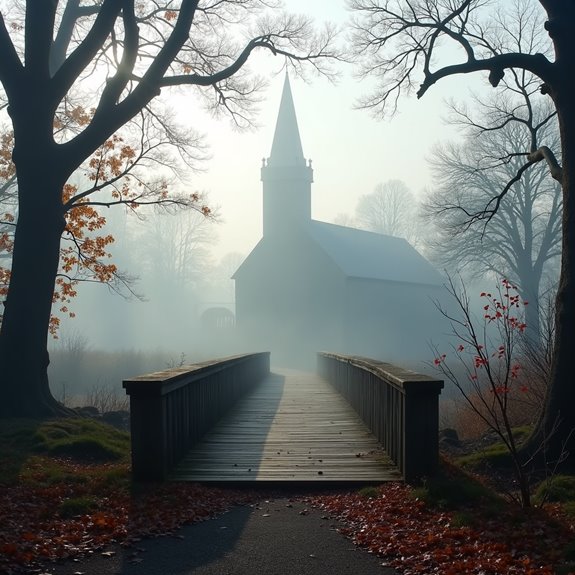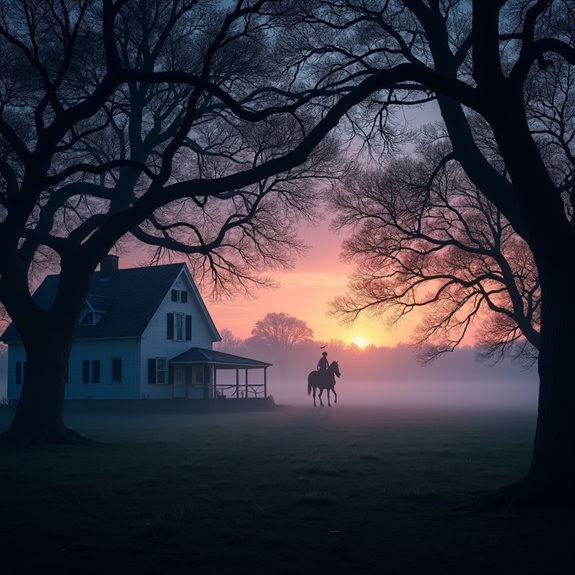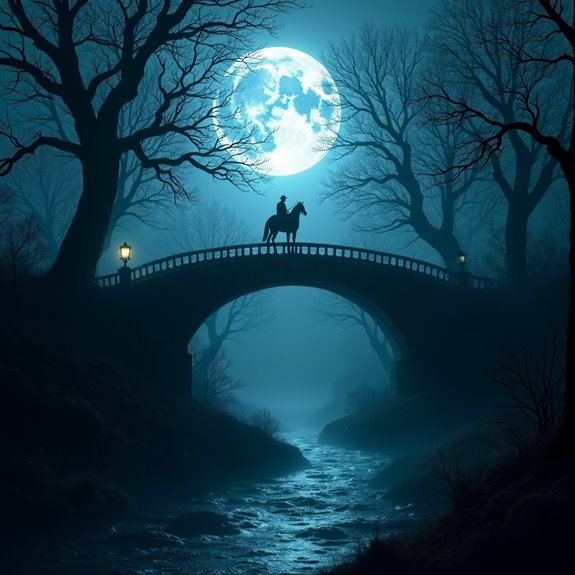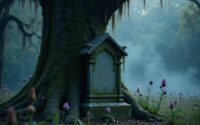What’s the Real Story Behind the Legend of Sleepy Hollow?
The legend of Sleepy Hollow carries deep roots in American folklore and history, primarily shaped by Washington Irving’s 1820 narrative. Set in a quaint Dutch colonial town, it intertwines themes of fear, love, and the supernatural. Various sightings and local traditions have kept the ghostly figure of the Headless Horseman alive in the collective imagination. But what truly sparked the legend, and how does it reflect the community’s spirit? The answers may surprise you.
Introduction

In the quiet town of Sleepy Hollow, nestled in the rolling hills of New York, a blend of myth and reality captures the imagination of readers. The tale of the Headless Horseman, a ghostly figure who roams the darkened roads near the village, delivers both intrigue and chills. This enchanting legend, popularized by Washington Irving in the early 19th century, intertwines local history with fantastical elements that engage audiences today. The story, filled with themes of fear, love, and adventure, creates a mesmerizing atmosphere where reality often blurs into the supernatural. Generations have embraced Irving’s creation, allowing it to become an enduring symbol of American folklore, a tribute to the town’s rich narrative and cultural heritage.
Dutch Colonial Influences

Although the echoes of Dutch colonial history are often overshadowed by the ghostly legends of Sleepy Hollow, they play a crucial role in shaping the town’s identity and culture. The settlers brought with them distinctive architectural styles, including steep-pitched roofs and large, decorative gables that still characterize many buildings today. Their influence is evident in the local vernacular, with place names like Tarrytown and Sleepy Hollow rooted in Dutch language. Additionally, the customs and traditions introduced by these early inhabitants, from celebrating unique holidays to culinary practices, continue to enrich the community. These elements reflect a blend of Dutch heritage with local innovations, creating a unique cultural fabric that stands strong against the passage of time, even amidst the town’s eerie tales.
Notable Cases or Sightings

The rich Dutch colonial heritage of Sleepy Hollow sets a fascinating backdrop for the town’s ghostly legends, particularly its notable cases of hauntings and sightings. Locals have reported eerie experiences at the Old Dutch Church, where some claim to hear whispers and see shadowy figures flitting past the windows. In the woods around the Sleepy Hollow Cemetery, hikers often speak of a spectral presence, feeling as though they are being watched. Perhaps the most intriguing sighting is that of the Headless Horseman himself, with witnesses describing a galloping figure in the moonlight. These accounts, whether rooted in reality or imagination, contribute to the town’s allure and keep the legend alive in the hearts of visitors seeking the supernatural.
Common Theories or Explanations
While many dismiss the tales of hauntings in Sleepy Hollow as mere folklore, several theories attempt to explain these ghostly encounters. One prominent theory suggests that the area’s dark, dense woods amplify sounds, creating eerie atmospheres that lead to misinterpretations of normal events. Others believe the historical significance of the region, steeped in conflict and tragedy, attracts restless spirits seeking closure. Additionally, some locals point to the psychological impact of the legend itself; the more people hear about the Headless Horseman, the more likely they are to perceive sightings. Finally, the influence of nature and the changing seasons might enhance people’s imaginations, triggering vivid experiences where reality and myth blur, bringing the legends to life in unexpected ways.
Frequently Asked Questions
Who Was Washington Irving and Why Is He Significant?
Washington Irving was an influential American writer known for his short stories and essays. He popularized American literature in the early 19th century, blending humor with keen observations of American culture and character in his work.
Is Sleepy Hollow a Real Place or Fictional?
Sleepy Hollow is a real place in New York, known for its picturesque landscapes. However, the legend surrounding it, including the Headless Horseman, is largely fictional, inspired by Washington Irving’s famous short story.
How Has Sleepy Hollow Been Portrayed in Popular Culture?
Sleepy Hollow’s been portrayed in various ways across literature, film, and television. Its eerie atmosphere and iconic characters, like the Headless Horseman, captivate audiences, sparking fascination and inspiring countless adaptations and reinterpretations throughout popular culture.
What Impact Did the Legend Have on Tourism in Sleepy Hollow?
The legend’s intriguing tales attracted tourists, boosting local businesses and inspiring events. Visitors explored the area’s haunted history, drawn by the allure of the Headless Horseman, and helped establish Sleepy Hollow as a vibrant cultural destination.
Are There Any Local Festivals Celebrating the Legend Today?
Yes, Sleepy Hollow hosts local festivals celebrating the legend, like the annual Halloween Festival. Visitors enjoy haunted hayrides, pumpkin carving, and storytelling sessions, creating a festive atmosphere that honors the town’s iconic spooky tale.
Related Posts

The Role of Animals in Traditional Myths

What Do Phoenix Legends Say About Rebirth?
